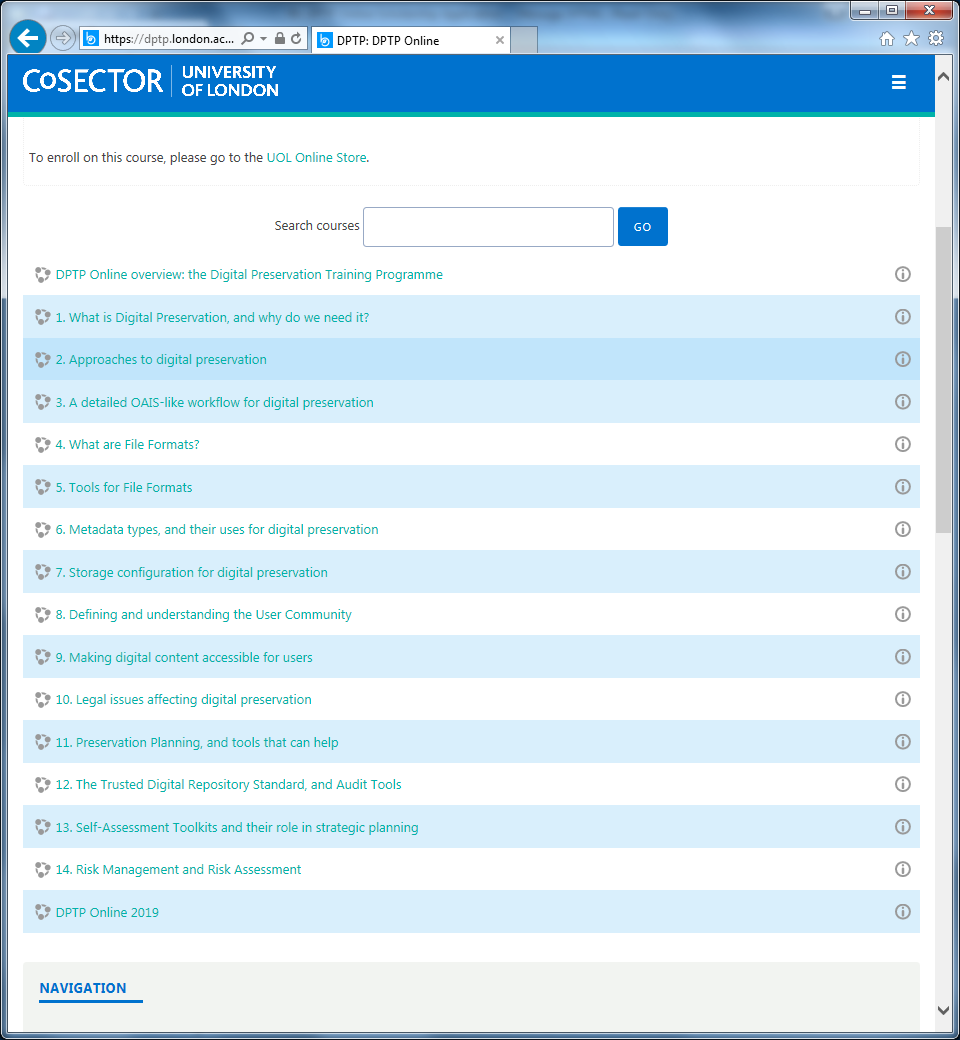Rachael Muir is Assistant Archivist at the Bank of England Archive, and attended the Digital Preservation Training Programme with support from the DPC's Leadership Programme which is generously funded by DPC Supporters
Since qualifying back in 2013, it feels like the advocacy and opportunities around digital preservation have got increasingly visible and louder. Certainly, as wider professional discussions have become more frequent, the gap in my knowledge of this subject area is something that has been playing on my conscience as a 21st century archivist! Arguably the main function of my role is to preserve, and what if the only records from this century that I know how to safeguard are those which happen to have been created in a physical format….
The answer was the DPC Leadership Programme, which I was the lucky recipient of a DPC scholarship for last year! The scholarship allowed me to undertake the online Digital Preservation Training Programme (DPTP), which is a collaborative course developed by CoSector, University of London and made up of 14 modules. The programme ranges from exploring the OAIS model, to usable tools for file formats, as well as the legal issues affecting the preservation of digital records. Without a doubt, it is comprehensive in the topics it covers.
As an institutional member of the DPC it was great to have the opportunity to apply for this scholarship. I hoped that by studying on this programme, I would finish the course with a better theoretical grounding in active digital preservation. This would then help support my understanding of the ins and outs of a digital archive pilot that we were about to embark on within the Bank.
 Within the archive circle, we are regularly talking about how important knowing the correct language is, especially when having to work with machine-learning engineers and computer scientists! This is where I felt the course excelled for me. By including pop-up information boxes throughout, I was consistently reminded about new terminology such as ‘checksum’, or ‘significant properties’ as well as useful reminders of useful definitions around ‘structural metadata’ and ‘representation information’. Knowing how to express correctly and coherently what I am doing when operating a digital archive is, for me, one of the most important parts of working in a digital record environment. This course has definitely supported my learning in what can be at times, an overwhelming world of definitions, abbreviations and acronyms.
Within the archive circle, we are regularly talking about how important knowing the correct language is, especially when having to work with machine-learning engineers and computer scientists! This is where I felt the course excelled for me. By including pop-up information boxes throughout, I was consistently reminded about new terminology such as ‘checksum’, or ‘significant properties’ as well as useful reminders of useful definitions around ‘structural metadata’ and ‘representation information’. Knowing how to express correctly and coherently what I am doing when operating a digital archive is, for me, one of the most important parts of working in a digital record environment. This course has definitely supported my learning in what can be at times, an overwhelming world of definitions, abbreviations and acronyms.
Although my initial hope had been to use my new found knowledge as part of a wider digital archive pilot, technical hitches hindered how much I was able to do this. There is no doubt that forming a strong understanding of the theoretical issues and challenges is important, but doing this course alongside a practical live work-flow would definitely have helped me grasp the processes more quickly. A couple of the modules did include a recorded demo such as module 5 ‘Tools for File Formats’ which really provides you with a good insight into the processes, as well as the questions to ask, and the issues that might arise. Being able to translate what I am studying on the course to how it plays out in my own workplace is definitely the hardest part of all, so demos such as these really help to make the whole concept of digital preservation a little more manageable for first-time learners like myself.
There is no doubt that the processes around digital preservation will be different for every archivist – legacy infrastructures, file formats, technical support and wider resources will all vary from institution to institution. But the DPTP breaks down the biggest of challenges into smaller manageable chunks. There is no way that an online course can cover every question and challenge that digital preservation might throw up, but DPTP is certainly a good starting point for developing the underlying knowledge that every archivist now needs.









































































































































